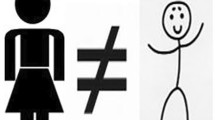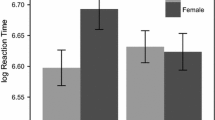Abstract
Children's knowledge of human genital anatomy was examined retrospectively. Of the 223 adults who responded to a questionnaire on this subject, 39.8% of males and 29% of females learned correct anatomical names for male genitalia as children. In contrast, only 6.1% of females and 17.7% of males learned correct names for female genitalia. Most respondents learned either euphemisms or no names for female genitalia as children. Whereas male respondents acquired a complete vocabulary for male genitalia by a mean age of 11.5 years, female respondents did not complete their anatomical vocabulary for female genitalia until a mean age of 15.6 years. The importance of recognizing that children have erotic experiences and that they need a vocabulary for describing their feelings is discussed.
Similar content being viewed by others
References
Bosmajian, H. A. The language of oppression. Washington, D.C.: Public Affairs Press, 1974.
Brown, R. W., & Lenneberg, E. H. Studies in linguistic relativity. In E. E. Maccoby, T. M. Newcomb, and E. L. Hartley (Eds.), Readings in social psychology. New York: Holt, Rinehart, and Winston, 1958.
Calderone, M. Eroticism as a norm. Family Coordinator, 1974, 23(4), 337–341.
Kinsey, A. C., Pomeroy, W. B., & Martin, C. E. Sexual behavior in the human male. Philadelphia and London: W. B. Saunders, 1948.
Kinsey, A. C., Pomeroy, W. B., Martin, C. E., & Gebhard, P. H. Sexual behavior in the human female. Philadelphia and London: W. B. Saunders, 1953.
Kreitler, H., & Kreitler, S. Children's concepts of sexuality and birth. Child Development, 1966, 37(2), 363–378.
Lerner, H. E. Parental mislabeling of female genitals as a determinant of penis envy and learning inhibitions in women. JAPA, 1976, 24(5), 269–283.
Webster's new twentieth century dictionary of the english language. Collins and World: 1977.
Whorf, B. L. Language, thought and reality. In J. B. Carroll (Ed.), New York: Wiley, 1956.
Whorf, B. L. Science and linguistics. In E. E. Maccoby, T. M. Newcomb, and E. L. Hartley (Eds.), Readings in Social Psychology. New York: Holt, Rinehart and Winston, 1958.
Author information
Authors and Affiliations
Additional information
The authors wish to thank Amy Hook and Dr. Gregory Gartrell for statistical assistance in the preparation of this manuscript. The authors would also like to express appreciation to Drs. Camille Lloyd, Lois Biener, and Joe Pleck for helpful comments on earlier drafts of this manuscript.
Rights and permissions
About this article
Cite this article
Gartrell, N., Mosbacher, D. Sex differences in the naming of children's genitalia. Sex Roles 10, 869–876 (1984). https://doi.org/10.1007/BF00288510
Issue Date:
DOI: https://doi.org/10.1007/BF00288510




